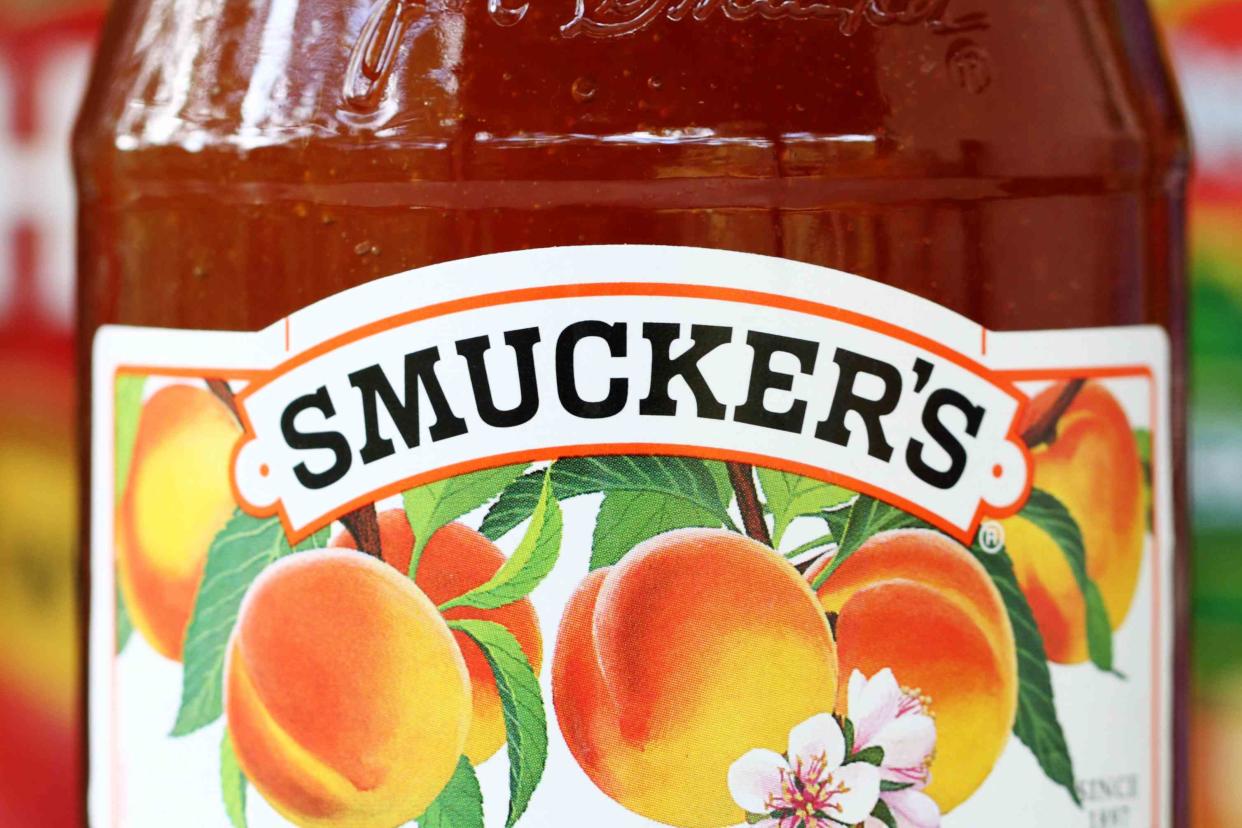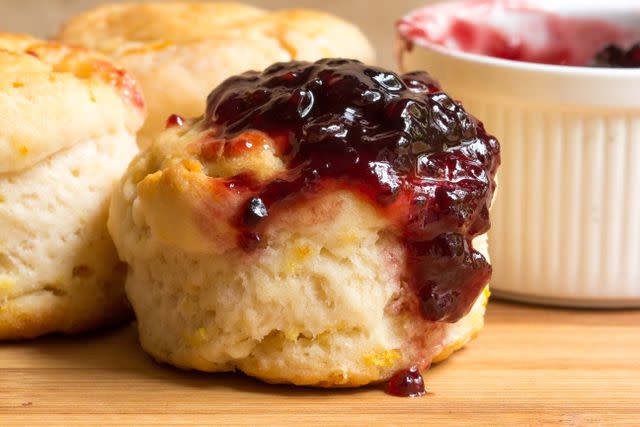The Only Way You Should Store Jam, According to Smucker's
Is it OK to leave it out on the counter if you use it every day?

Simply Recipes / Getty Images
Recently, I’ve been running through jam exceptionally quickly. I’ve started adding a spoonful to my oatmeal; I’ve rediscovered the wonders of a PB&J (except with almond butter); I’ve been plopping a dollop into a glass with gin, lemon juice, and sparkling water; and I’ve been spreading it on toast with cream cheese just like I did when I was a kid. Jam has reentered my life as a staple.
As it turns out though, jam can be a contentious kitchen staple. For starters, jam or jelly? Fridge or counter? And just how long does it last anyway? For instance, there's some grape jelly languishing in my fridge and I’m not sure where or when I acquired it. Is it still safe to eat?
With these questions in mind, I reached out to the experts at Smucker’s, the household favorite jam and jelly producers, to get some answers.
What’s the Difference Between Jam and Jelly?
I’m sure in many households (certainly in mine), a jam vs. jelly debate persists. Similar in application and taste, but texturally very different, the two spreadable substances can be distinguished by their ingredients.
Although both are made from fruit, “jelly is made from fruit juice and is generally firmer than jam,” says Smucker’s, whereas “jam is made from a blend of crushed pieces of fruit and fruit purée.”

Simply Recipes / Getty Images
The Best Way To Store Jam and Jelly
Now that we’ve gotten the difference between jam and jelly out of the way, is there any difference in how they should be stored? Put simply, Smucker’s says it “recommends refrigerating fruit spreads, jams, jellies, and preserves after opening for maximum freshness and flavor.”
With both jam and jelly, spoiling is likely to occur more quickly if left out at room temperature. No matter which spread you prefer, storing it in the fridge will not only lengthen its shelf life but also maintain its flavor and color.
What Are Telltale Signs My Jam or Jelly Has Spoiled?
“Clues that an opened jar of jam or jelly has gone bad include visible signs of mold or yeast,” says Smucker’s. “For jam or jelly that is unopened, swelling or dents in the packaging are also a sign that the product may be past its prime.”
Jam and jelly are more likely to go bad if contaminated with other food. If you’ve been double dipping in the jelly, those breadcrumbs that made their way into the jar will shorten the spread’s shelf life, so use a clean spoon or knife every single time you dip into the jar.
Smucker’s also told me that the type of packaging (a jar vs. a squeeze bottle) doesn’t impact how the spread should be stored, nor does it change the signs of spoilage. However, with a squeeze bottle, you may not be able to see signs of mold or yeast as easily as they could be spotted in a jar. All the more reason to store it in the fridge and use it before its expiration date.
Read the original article on Simply Recipes.






